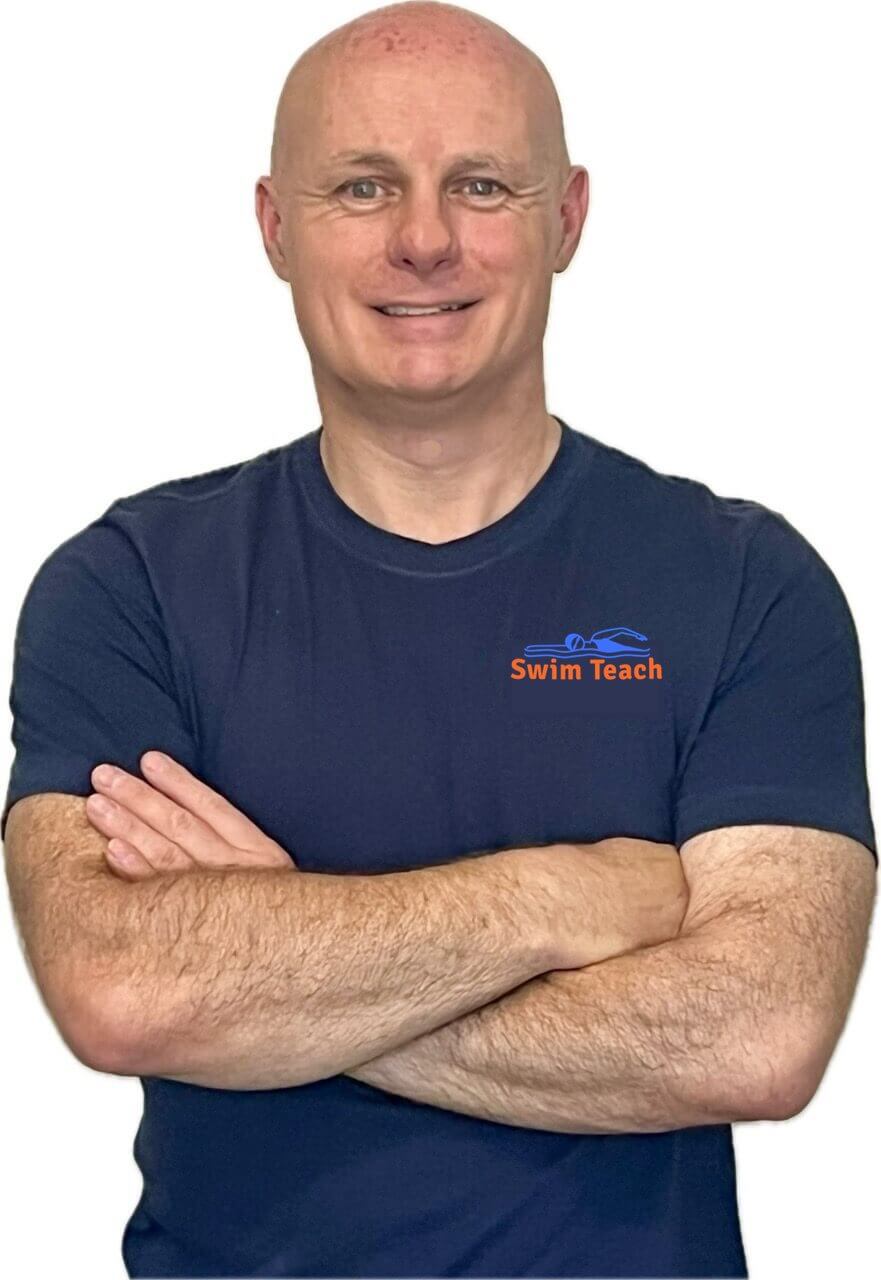- Swim Teach Home
- teaching your child to swim
Swimming Pool Games Without Toys
Use games and play to get the best out of your child
Using swimming pool games without toys, or with the very minimum of equipment, is the best way of teaching your child to swim. Games and play will not only open their minds to imagination and engagement, but it will help to distract them from the fears and anxieties often associated with the new sensations of being in the water and the expectations that come with learning how to swim.
These games and activities are all based on the basic building blocks of learning how to swim. Each game focuses on a particular aspect or combination of parts of swimming, so while your child is busy playing, they are learning a specific skill.
The essential skills the children focus on include:
- Getting used to the water
- Moving around the pool
- Breathing
- Floating
- Submerging
- Gliding
- Kicking their legs
- Pulling with their arms
Each game or activity shows what skill your child is learning and outlines the aim of the game from a learning-to-swim point of view. It also outlines any equipment you need, key phrases your child needs to hear, and how the game can progress if your child becomes confident or finds it easy.
Teach Your Child To Swim Through Games and Play
Discover 60 games that use the power of play to embed basic swimming skills and help make your child a happy and confident swimmer (click here for a preview and full index of all 60 games).
Don't miss out! Click here to check it out and grab your copy.
Swimming pool games without toys
1. Slide And Ski
Skill: moving through the water.
Aim: to get used to moving through the water independently.
This game is excellent for getting your child moving independently and confidently through the water, as they can play it in any depth of water up to chest level. From a standing position, they move forward through the pool by sliding their feet one at a time across the pool floor. They can slide in a diagonal movement as if they are skiing. They can play this without needing to lift their feet from the pool floor, which is helpful for the nervous child or child that lacks balance.
Key phrases: ‘take your time, slowly at first’ ‘keep your feet on the floor’ ‘small movements, then make them bigger’
Progression: place objects on the pool floor for your child to seek out and collect. If the water becomes too deep for them to reach, they may have to use some breath-holding and submersion skills to retrieve them.
2. Blow It Along
Skill: Breathing
Aim: to learn a basic breathing technique and gain confidence in breathing and moving around the pool.
You need: a light floating object such as a small ball or an egg flip.
Have your child crouch down in shallow water or a water depth with their chin on the water’s surface. They walk around the pool, blowing a floating object along. You could set a predetermined destination for the object, such as the poolside or another floating object.
Key phrases: ‘take a deep breath and blow’ ‘keep your chin on the water’ ‘let the water tickle your chin’
Progression: race your child with another object over a set distance or have them complete a course within a specified time. These will create a sense of urgency and speed, which may distract them from any fears or anxieties about breathing.
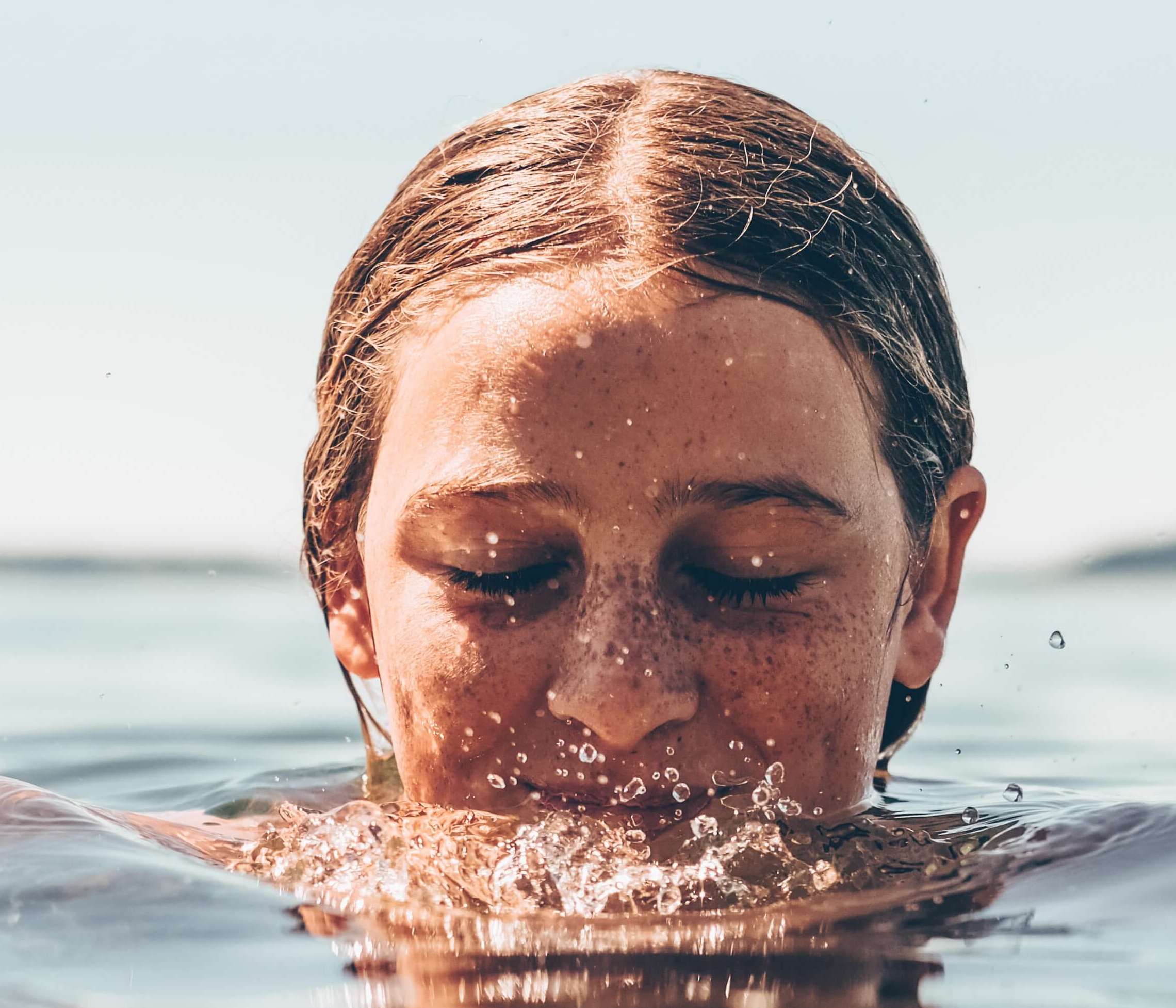 |
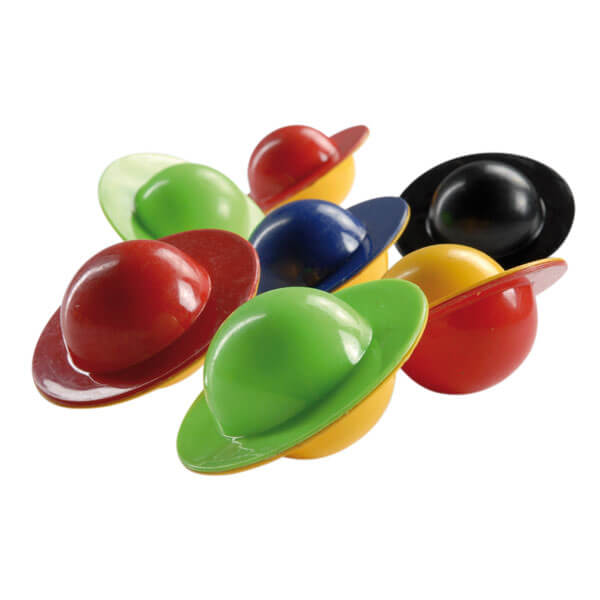 |
3. Floating Stars
Skill: floating
Aim: to gain confidence in lifting the feet off the pool floor and floating.
Your child can play this game with buoyancy aids (the ideal aid is a woggle) or without buoyancy aids. Your child begins with shoulders submerged and arms stretched out in front and wide apart. Standing on one leg, they stretch the other out behind, lift the standing leg off the pool floor, and lay into a star float position. How long can they maintain this floating position?
Key Phrases: ‘relax and take your time’ ‘stretch out like a big star’ ‘let the water support you’
Progression: play this without buoyancy aids if they have used them previously. Have your child play this with face down, blowing bubbles.
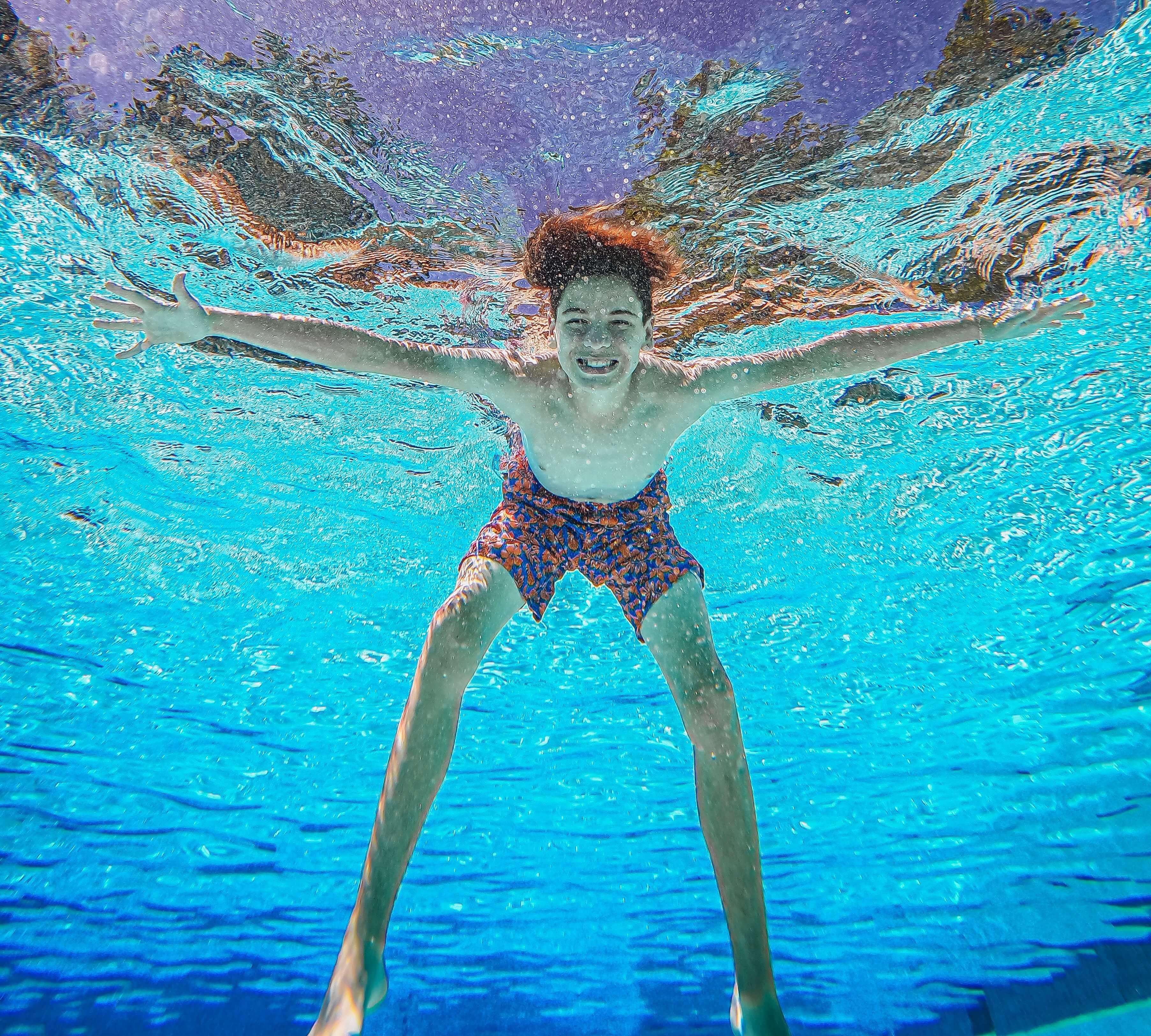
4. Pop Ups
Skill: submerging
Aim: to gain confidence in gradually submerging the face.
Standing in shallow water, around chest depth, encourage your child to sink down and then, on your command, ‘pop up!’. This game is an excellent way to get them used to holding their breath and submerging their face. The nervous child only needs to submerge their mouth. As confidence grows, they can progress to mouth, nose, eyes, and finally complete submersion. Encourage them to bend their knees as they sink so they can spring up fast like a Jack-in-a-box.
Key phrases: ‘relax and take your time’ ‘hold your breath and slowly sink’ ‘feel the water around your mouth and nose’
Progression: keep them under the water for longer before you shout ‘pop up!’ to help them hold their breath slightly longer.
Sign up for free games that make teaching your child to swim easy.
5. Rocket Launch
Skill: gliding
Aim: to learn how to adopt a streamlined position and travel through the water in a supine (on the back) position
This is one is the best swimming pool games without toys because it tests how far your child can stretch and glide across the water's surface. Children can play this in shallow or deep water, with assistance if needed. Have your child start by holding the poolside with both hands, in a tucked position, with their back to the water and with both feet foot against the pool wall. You count down ‘5, 4, 3, 2, 1…blast off!’ They push away from the poolside like a rocket taking off and glide across the surface, seeing how far they can travel.
Children can wear buoyancy aids for this game, but be aware that some aids can cause resistance, slow the glide, and be counterproductive.
Key phrases: ‘stretch out’ ‘make your body long and thin’ ‘keep your arms by your sides’ ‘look up to the sky’
Progression: play the game without any buoyancy aids if your child has used them previously. Push off and glide with arms stretched out on either side of the head.
Make It Easy For You Kids To Learn To Swim
Download your copy and discover the power of play!
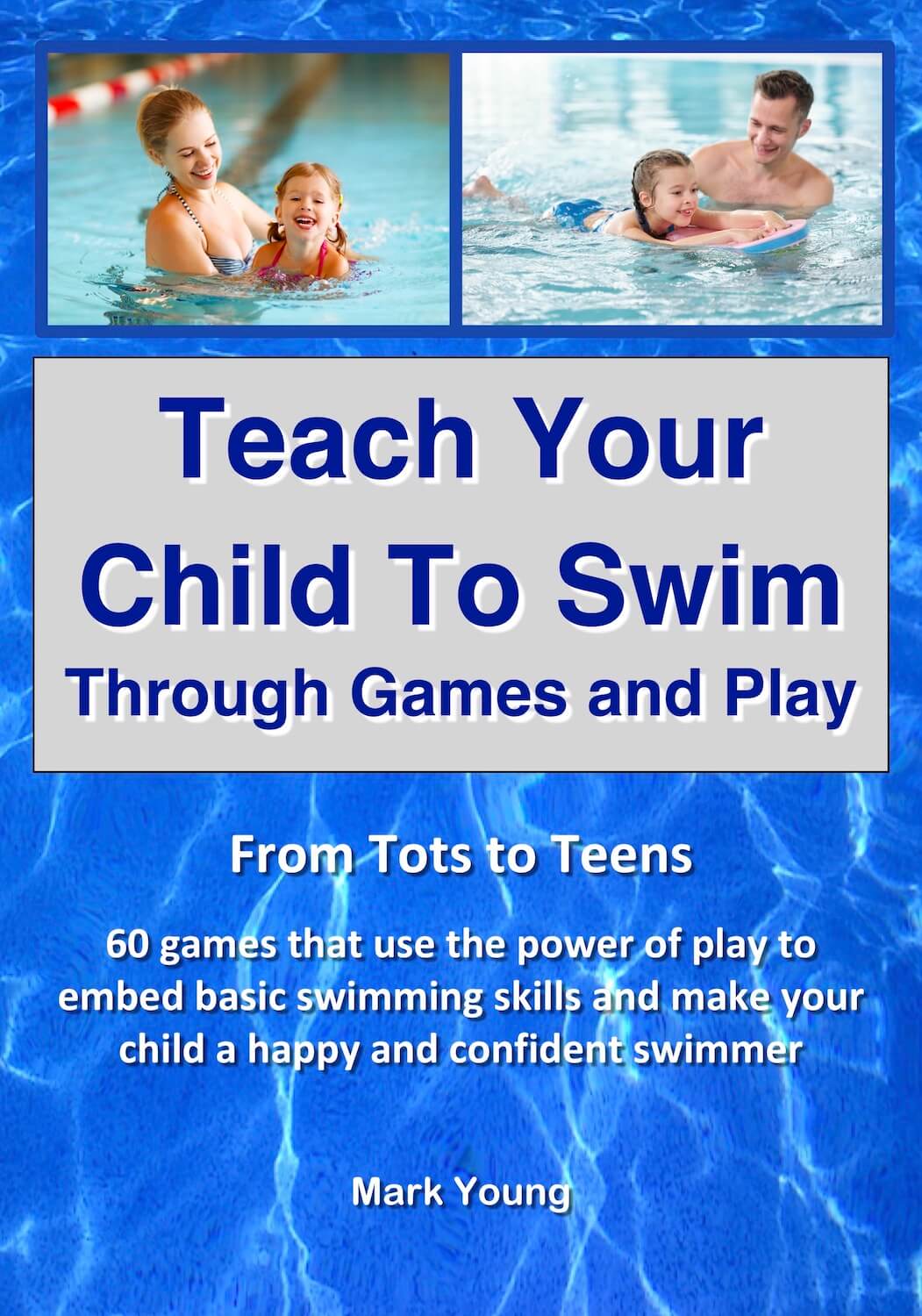 Teach Your Child To Swim Through Games And Play
Teach Your Child To Swim Through Games And Play60 games that use the power of play embed basic swimming skills and make your child a happy and confident swimmer.
$14.99

I am a member of the Amazon Associates Program and I will earn a commission from qualifying purchases at no extra cost to you.


